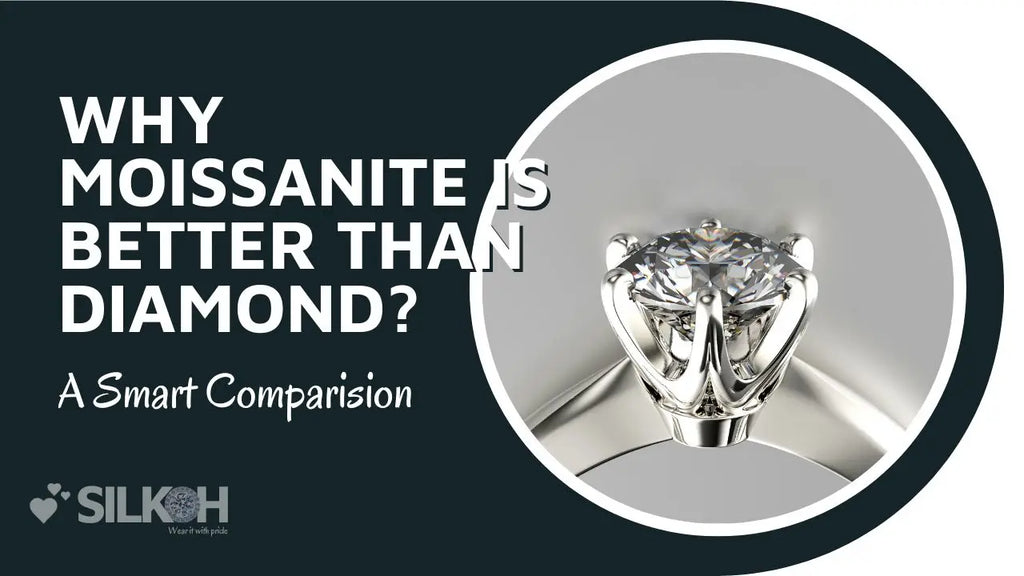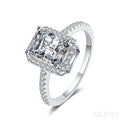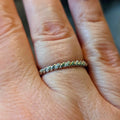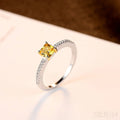Why Moissanite is Better Than Diamond? A Smart Comparision
Posted by TEAM SUPPORT

In recent years, the jewelry market has witnessed a significant shift in consumer preferences, with many gravitating towards moissanite, especially when set in sterling silver. This change can be attributed to both the unique properties of moissanite and an evolving understanding of diamonds.
While diamonds have enjoyed a long-standing history of being the ultimate symbol of luxury and commitment, moissanite, with its captivating sparkle and affordable price, is challenging this dominance.
What Exactly is Moissanite?
Moissanite, a gemstone born from the stars, was first discovered in 1893 by Henri Moissan in a meteor crater in Arizona. Its composition is silicon carbide, which gives it an exceptional brilliance, often surpassing that of diamonds. This dazzling shine is due to its high refractive index.

Over time, scientists have perfected the art of creating moissanite in labs, making it readily available for jewelry. Its cosmic origin, coupled with its mesmerizing sparkle, has made it a sought-after choice for modern jewelry enthusiasts.
Benefits of Choosing Moissanite
Choosing moissanite over diamonds is not just a matter of aesthetics; it's also a financially savvy decision.

Moissanite offers a brilliance that often outshines diamonds but at a fraction of the cost. This affordability does not compromise its value. In fact, moissanite retains its value over time, ensuring that consumers are making a sound investment.
Moreover, with the rising costs of diamonds and their often murky ethical background, moissanite presents a clear and cost-effective alternative for those looking to make a statement without breaking the bank.
Comparative Analysis: Moissanite vs. Diamond
When placed side by side, both moissanite and diamonds have their unique attributes.

Durability
In terms of durability, diamonds are slightly harder, ranking 10 on the Mohs scale, while moissanite follows closely at 9.25. However, what moissanite may lack in hardness, it more than compensates in brilliance.
Sparkle
Due to its refractive properties, moissanite often emits more fire and sparkle than a diamond. This can lead to a rainbow effect under certain lights, making it even more captivating.
Color and Clarity
Color and clarity are also crucial factors in this comparison. While diamonds come in various colors and clarities, which can significantly affect their price, moissanite is generally clear.
Less Flaws
It's worth noting that while diamonds can have inclusions or imperfections visible under magnification, moissanite's lab-grown nature often results in fewer flaws. This ensures that buyers receive a near-perfect stone every time.
Environmental Considerations
The carbon footprint of producing a single carat of diamond is significantly higher than that of producing moissanite.
The journey of a gemstone from its source to a jewelry piece is fraught with environmental and ethical implications. Moissanite, primarily lab-grown, boasts a sustainable production process with minimal ecological impact. In contrast, diamond mining often involves vast open-pit mines, deforestation, and ecosystem disruption.
Ethical Considerations

Beyond the environmental concerns, the diamond industry has been marred by ethical issues, notably the trading of "blood diamonds" that fund conflict and perpetuate human rights abuses. Moissanite, being lab-produced, sidesteps these concerns, offering a clear conscience to its buyers.
Moissanite in Sterling Silver Jewelry
Moissanite's radiant sparkle and affordability have spurred its popularity in diverse jewelry designs. From elegant engagement rings to stylish earrings, both men and women are embracing moissanite in sterling silver settings.

Its versatility extends to customization, allowing buyers to tailor their pieces to personal preferences, be it in terms of cut, setting, or design.
Conclusion
The allure of diamonds has been undeniable for centuries. However, the modern consumer, informed and conscious, is veering towards moissanite. Its dazzling brilliance, combined with its ethical and environmental benefits, positions it as the gemstone for the future. As we embrace this shift, it's evident that moissanite is not just a passing trend but a revolution in the jewelry industry.
TAGS:

























